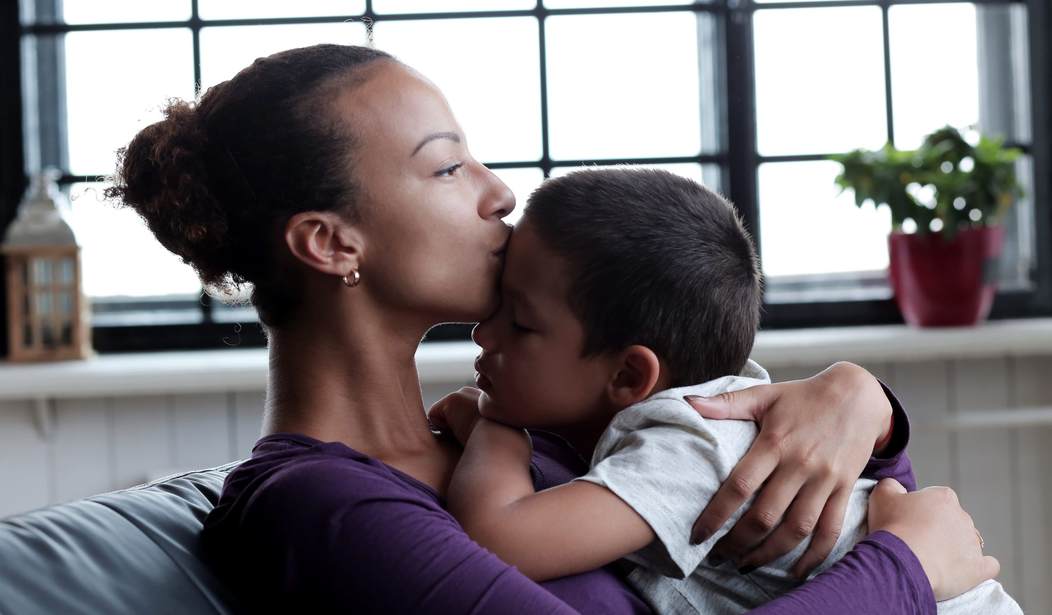Transgenderism has taken over the headlines in American culture, even though research tells us the LGBTQ community represents less than 4% of the country’s population. This small but mighty community has me thinking, as a mom, what I’ll teach my son about gender. Are contemporary parents doing something wrong if they teach their children to identify with the gender they are given at birth?
Here Are 5 Reasons I am Teaching My Son That He Is a Boy
1. Kids Frequently Change Their Minds
Kids are fickle. While walking through the grocery store with my son, he transforms from a lion to a monkey to an elephant at a moment’s notice. Children are indecisive, and choosing a gender does not change that fact. Research tells us the decision to transition during childhood is almost always met with regret. In fact, the DSM-V (Diagnostic and Statistical Manual of Mental Disorders) reports that “as many as 98% of gender confused boys and 88% of gender confused girls eventually accept their biological sex after natural passing through puberty.” That same manual states: “…many children with gender dysphoria outgrow it as they age.”
2. Society Has Changed Its Mind
The concept of transgenderism is one that has evolved drastically over that last forty years. Until the 1950s “[homosexuality], fetishism, gender identity disorder, and associated conditions were… regarded as types of sexual perversion that were considered ethically objectionable.” Within that same decade, the first sex-reassignment surgery was performed and the new concept of gender (rather than biological sex) was introduced. From then until 1980 psychologists referred to transsexualism as the DSM-III and DSM-IV created different categories of the disorder. In 2013’s updated version of the DSM, the disorder was given a new name: gender dysphoria. The name change was “an attempt to include only a medical designation of people who have suffered due to the gender disparity” so that only those troubled by their transgenderism were considered mentally ill.
What other changes will the DSM tell us to accept in the next forty years?
3. There are Many Dangers to Transgenderism
The most comprehensive study on transgenderism was conducted in Sweden over a thirty year time period. The Swedes, as a culture, attach very little stigma to transgenderism. The conclusion of this study is as follows:
Persons with transsexualism, after sex reassignment, have considerably higher risks for mortality, suicidal behavior, and psychiatric morbidity than the general population. Our findings suggest that sex reassignment, although alleviating gender dysphoria, may not suffice as treatment for transsexualism.
That same study found the “Rates of suicide are twenty times greater among adults who use cross-sex hormones and undergo sex reassignment surgery.”
The American College of Pediatrics reports:
Children who use puberty blockers to impersonate the opposite sex will require cross-sex hormones in late adolescence. Cross-sex hormones (testosterone and estrogen) are associated with dangerous health risks including but not limited to high blood pressure, blood clots, stroke and cancer.
All of this for something my son is 98% likely to change his mind about?
4. Chromosomes Never Change
Not long ago a friend of mine welcomed a baby girl to her family. My friend was told by physicians that her daughter had “ambiguous genitalia”; they could not determine her gender based on the baby’s anatomy, so chromosome testing was employed. The tests were clear: her daughter had XX chromosomes and was, indeed, a girl. Her daughter has undergone surgeries and will need medication to balance all of the hormones interrupted by this abnormality, but her chromosomes speak for themselves: she is a girl.
Paul McHugh, a former psychiatrist at Johns Hopkins Medical School, published his thoughts last summer that shocked many. After forty years working with transgender individuals he remarks:
Transgendered men do not become women, nor do transgendered women become men. All (including Bruce Jenner) become feminized men or masculinized women, counterfeits or impersonators of the sex with which they ‘identify.’ In that lies their problematic future.
The American College of Pediatrics concludes their recent statement with: “People who identify as ‘feeling like the opposite sex’ or ‘somewhere in between’ do not comprise a third sex. They remain biological men or biological women.” No matter the hormones, surgeries, bathroom choices or types of clothing a person wears, it does not change the chromosomal reality that he or she is a man or a woman, with no third option.
5. It Is my Job to Parent my Son
The American College of Pediatrics recently released a statement summarizing their conclusion that gender ideology harms children:
Conditioning children into believing that a lifetime of chemical and surgical impersonation of the opposite sex is normal and healthful is child abuse. Endorsing gender discordance as normal via public education and legal policies will confuse children and parents… A person’s belief that he or she is something they are not is, at best, a sign of confused thinking.
It is my job as his mother to teach my son fact from fiction. Neglecting to do so could have grave consequences in his life.
The research is in favor of parents sticking to traditional teachings about their child’s biological gender.









Join the conversation as a VIP Member